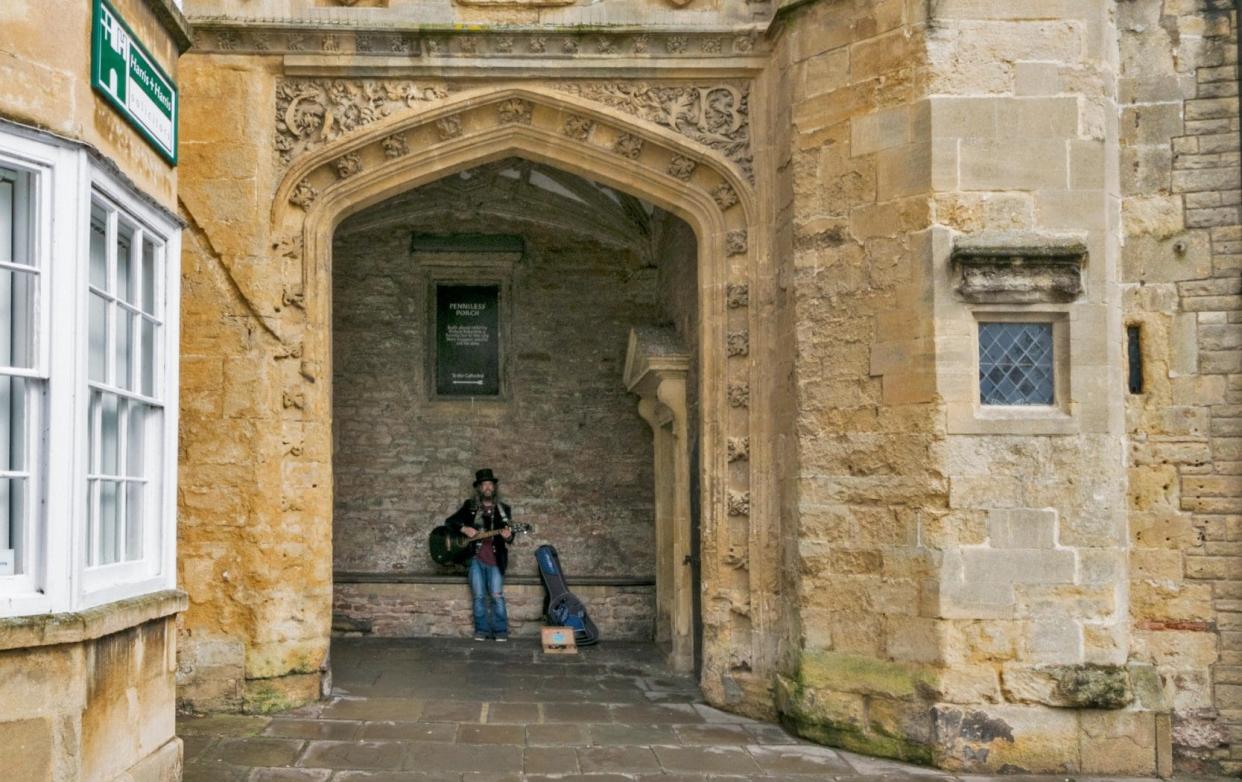Sacred Mysteries: The day that the tree fell on the midwife

There is a social truce in Spain, I’ve noticed, by which beggars don’t ply their trade in church. Often, though, a man stands in the porch, holding a little cardboard tray or plastic cup and sometimes making to open the door.
The beggar in the porch has a ritual affinity with the lame beggar in the Acts of the Apostles, at the Beautiful Gate of the Temple, to whom Peter says: “Silver and gold have I none; but such as I have give I thee.” He then heals him in Jesus’s name.
Modern almsgivers might not always have that event in mind, but Helen E Lunnon points out in a new book that ritual doesn’t just mean liturgy. She follows the great anthropologist Mary Douglas in realising that a regular 10am coffee with colleagues is as much a ritual as a designated church sacrament.
The beggar (whose biblical example would have been universally familiar when a medieval porch was built) is not the reason for its construction, but he fits well into its daily life. There are still buskers in Penniless Porch outside Wells cathedral.
In the high Middle Ages, people would often make provision in their wills for money or dole in kind to be given to mourners who attended their funeral or the requiems a month or year after their death. If there was, as is often the case in England, a stone bench in the porch, beneficiaries might find laid out there their purses or loaves.
Dr Lunnon, who works at Norwich Castle Museum, has called her book East Anglian Church Porches and their Medieval Context. It’s the best book on church porches since J Charles Wall’s Porches and Fonts (1912), and more reliable. As well as enjoyably surveying porches of diapered brick, exuberant Gothic ashlar or decorative flint flushwork, the author asks what the porches were for.
Not for reading notices of parochial church council meetings, you might think, but surely for turning back your hood and shaking the rain from it. Then for taking holy water from a stoup and signing yourself with the cross before stepping over the threshold.
From the porch, a medieval woman or man might look in on the way to work to see the big image on the church wall of St Christopher, whose prayers were believed to save them from harm that day.
Though by Chaucer’s day, most sinners were reconciled to God by private sacramental confession to a priest and private penance, there was still a mechanism of reconciliation for public sins. Penitents would be sent outside the church on Ash Wednesday and the wooden door shut. They would not come back into the church from its porch until Maundy Thursday.
The link with penance made the porch suitable as a burial place for a humble penitent. Geoffrey de Mandeville, 1st Earl of Essex, was buried in the porch of the Temple church, London, after posthumous absolution from excommunication for plundering churches. It was after three years, Dr Lunnon tells us, of his body hanging in a tree.
A tree also figures in an account from 1427 of Joan Alyngton proving her age and right to inherit. Witnesses deposed that they had attended her baptism, four holding candles, one standing in the porch and seeing the midwife carry the baby in. (The mother did not come into the church till weeks later, when she had been ritually purified, even though Pope Gregory had advised St Augustine of Canterbury 800 years earlier that if she did, “she would do nothing wrong”.) To nail down the day of the baptism, it was the one “when a great oak standing before the door of the hall suddenly fell, a branch hit the midwife and she only just escaped with her life”.

 Yahoo News
Yahoo News 
